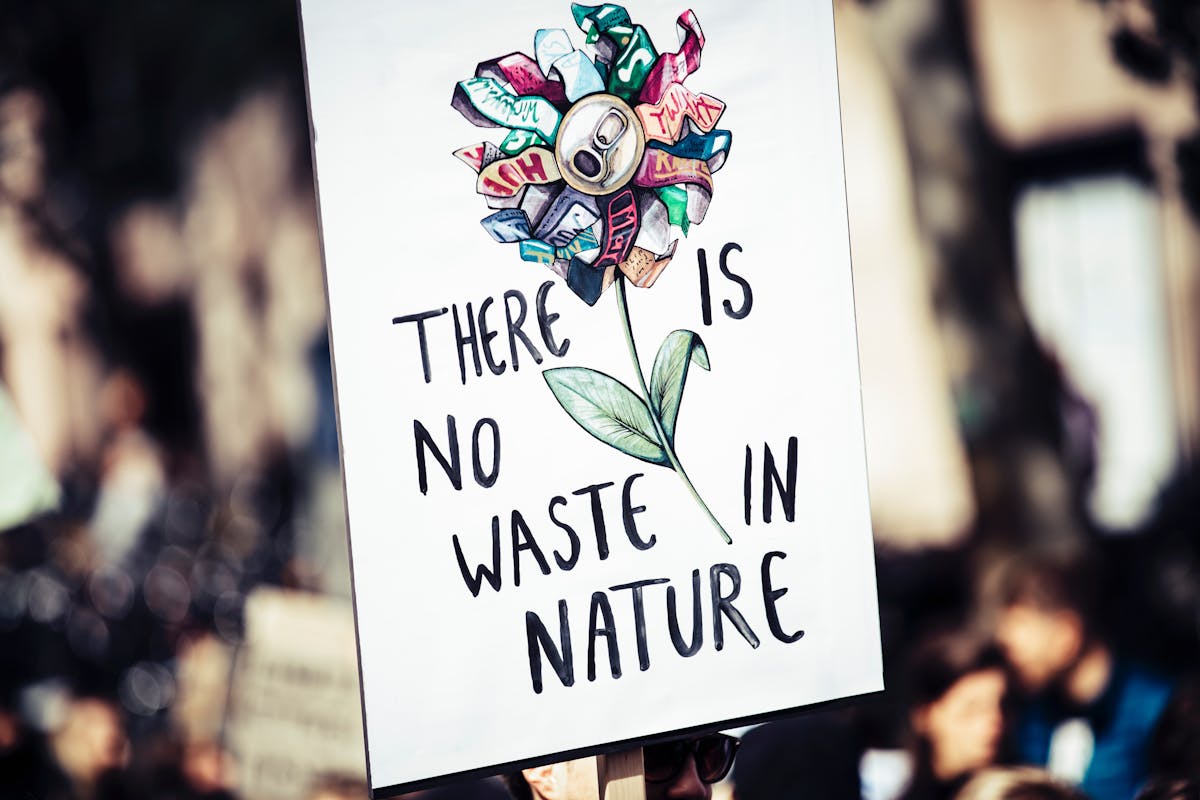The word sustainable is ubiquitous in today’s contemporary society given the notion of “being green” increasingly finding its way into the collective consciousness. In regard to this, there is talk surrounding responsible travel or green travel and how it has become necessary for us to protect natural environments while traveling. With mass tourism on the rise, the world’s most enticing destinations are now facing environmental, economical, and socio-cultural threats. Tourism has great potential in terms of boosting the local economy’s growth, but if mismanaged, it can negatively impact local communities and environments.
If the devastating COVID-19 pandemic has taught us anything, it is that the concept of sustainable travel needs to be seriously considered. This article attempts to give the reader a fair idea of the topic and how, as a traveler, one can embrace practical steps to reduce their travel footprint and as a result, the harmful side effects of the global travel industry.
Green travel respects the environment through responsible behaviours and offsets, or lessens the negative effects of tourism on the environment.
Green & Sustainable Travel

If travel is to remain in the long run, it has to be ethical. Sustainable travel is ensuring that present needs are met without compromising on future generations. It is the effective management of resources in such a way that economic needs are fulfilled without disturbing a fine ecological balance. It is to minimize the harmful impacts of tourism to the point that the environment, the travel industry, tourists, and native communities alike can mutually benefit without causing friction. Green travel keeps the spirit of adventure alive by promoting authentic experiences that protect natural resources and conserve heritage and culture.
Why Responsible & Sustainable Travel really matters?
Like most things that come with pros and cons, the travel industry also bears both positive and negative consequences. Though tourism has been known to benefit countries economically, there have been rising concerns around its impact on the environment. From 25 million international tourist arrivals in 1950 to 1.442 billion arrivals in 2018, the industry has seen a massive rise on the global scale. Today, the situation is so bad that locals are beginning to display hostility towards tourists. It is also worthy of mention that 5% of global greenhouse gas emissions are traced back to tourism, with 90% alone accounting for transportation.
With climate change posing a real threat to our survival, it has become important, now more than ever, to encourage the idea of green travel. Unless we rethink our holidays, the cons are bound to increase. To be a conscious traveler and to travel responsibly must be on the top of everybody’s checklist.
Green Travel vs Green Washing
The term sustainable travel has been gaining rapid traction over recent years, and while this is a good thing, it also opens doors for greenwashing. In order to avoid this, we need to dive into definitions so as to be able to differentiate between authenticity and shady processes.
Green Travel
Green travel is all about making eco-conscious choices while traveling in order to ensure you minimize your impact on the environment. It is about understanding, respecting, and supporting cultures and communities while traveling.
Greenwashing
Imagine championing the environment to gain real-time likes and follows from conscious consumers, while secretly dealing in unethical practices that continue to harm the environment. This is a typical case of greenwashing – when companies preach what they don’t practice.
So, how exactly can you spot greenwashing? For starters, if a company’s green commitments sound vague, or if their policies include unsubstantiated claims, or if their marketing efforts are not backed by evidence, you can be sure that the organization is trying to deceive its customers by appearing to be greener than it is.
15 Step Guide To Becoming a Responsible Green Traveler
Going green while traveling is an effective way to protect the earth’s natural and cultural resources. It is also a great way to establish deeper connections with local communities and the environment. To become a green sustainable traveler, you can follow these simple steps:
#1 Travel local
If a vacation is what you need, try opting for nearby destinations and staying local. Surprise yourself by (re)discovering the close by attractions. This way, you get to save on time and money and avoid air travel, which helps reduce greenhouse gas emissions.
#2 Shop and eat local
Avoid eating at multinational chain restaurants or shopping in large supermarkets and brand stores. Instead, choose small businesses and vendors to help stimulate the local economy. This way, you’re helping keep people employed and preventing transportation across far distances.

#3 Choose a green accommodation
On vacations, choose sustainable hotels that employ green practices. To ensure this, you may need to find answers to questions like if the hotel is certified, or if they have a sustainability report, or what their waste management protocol and plastic policy looks like, or if their products and menus are locally sourced, and so on.
#4 Find an eco-friendly tour operator
By choosing a tour operator that is genuinely committed to safeguarding the environment and the local community, you can minimize the negative impact that your trip would otherwise inflict. The easiest way to do this is to check the operator’s website for a green tourism policy.
#5 Reduce, reuse, and recycle
Reusing your towels instead of what the hotel provides, carrying a refillable water bottle, reducing food, water, and product consumption, and looking out for recyclable symbols are some ways to ensure you don’t add to the damage.

#6 Swear by the no trace policy
The idea is to leave a place you visited better than you found it. While traveling, ensure that you clean up after yourself, pick up trash when you see it, and become so invisible that not even your footprint can be traced.
#7 A big no no to plastic
By avoiding single-use plastics, you can prevent yourself from generating excessive waste and causing pollution. Say no to plastic bags, carry your own cloth bag, don’t do takeaways, use natural and plastic-free products, and bring your own toiletries rather than using pre-packaged ones.
#8 Use sustainable transport
Flying can seem easy and tempting, but it’s especially harmful to the environment. If your destination can be reached by train, consider opting for it. While exploring cities, cycling and walking are recommended. It’s also advisable to use public transport instead of cars which burn through double the amount of fuel. If you have no option but to fly, consider booking non-stop flights instead of having layovers.

#9 Be respectful
Green travel isn’t only about your impact on the environment, but also your consideration of local communities, customs, and culture. It is good to be mindful of the practices of the places you visit so that you don’t offend the locals in any way. Mostly, being a responsible traveler is being respectful of your surroundings and enriching the place that enriches you.
#10 Pack light
As insignificant as this may seem, it really isn't. By packing light, you ensure that the transportation vehicle of your choice is also light, which in turn reduces fuel consumption. Especially when you're paying for extra luggage on flights, your you're directly contributing to an increase in fuel consumption and hence a significant increase in your carbon footprint.
#11 Indulge in slow travel
Slow travel is a smart and responsible way to travel. Empty out that bucket list and embrace the local culture and community, immerse yourself entirely in the destination, and experience a deeper connection with your surroundings.

#12 Tread carefully on the road less traveled
Make it a point to stick to the trodden path while hiking and exploring as this ensures you don’t damage the flora around you. Certain plant species are extremely delicate and may cease to grow if constantly trampled upon, which is why trails are maintained in the first place.
#13 Don’t participate in unethical tourism
If you wish to join a wildlife tour or go scuba diving, ensure that the tour does not encourage direct contact with animals, or anything that isn’t regular in the natural world. Some ways to ensure you’re being a sustainable traveler is to participate in things like agritourism, charity tourism, and community-based tourism.
#14 Save electricity & water in every possible manner
Always switch off lights, air-conditioning, ceiling fans, and charging ports before leaving your room. Reduce your energy consumption, conserve water, and abandon baths for quick showers. Many hotels today use advanced punching mechanisms that automatically turn the electricity on or off with a card and a slot.
#15 Go paperless
A lot of attractions accept mobile tickets. This prevents travelers from printing boarding passes, hotel reservations, and entry tickets. By going paperless, you not only help the environment but also avoid losing tickets and enjoy easy access to them at the same time.

Additional Tips for becoming a Green Sustainable Traveler
- Ditch unnecessary souvenir shopping.
- Avoid littering and dispose of used items responsibly.
- Opt for low-carbon activities like rafting and trekking.
- Always carry an eco-friendly bag while shopping.
- Seek out indigenous artisans and local guides.
- Don’t just observe the local culture. Take an active part in it.
- Take any leftover soap, shampoo, or toothpaste with you.
- Return maps, brochures, and guidebooks so they can be reused.
- Forgo bargaining for a couple of bucks, especially with indigenous artisans.
- Make sure to ask the permission of locals before clicking their photos.
- Spend time volunteering for worthwhile causes. That way you're giving back to the community to balance your consumption.
- Actively educate others to become responsible travelers. The more responsible travelers to we have, the longer we get to enjoy the beautiful world we live in!
FAQs about Green Travel
A green traveler is someone who follows responsible travel practices that take environmental, social, and economic sustainability into account.
Green travel is important because it helps protect the places you visit and the people you meet. With over a billion travelers journeying across the world, it has become essential for each of them to leave a positive and not negative impact.
Using cloth/jute bags instead of plastic, opting for public transport or CNG-operated vehicles, using organic products, and not printing tickets, are just some of the ways a green traveler can embrace to help preserve the environment.
Being an eco-conscious traveler can mean packing a light suitcase, carrying a reusable water bottle, saying no to straws, eating locally, and using sunscreen that will not harm the environment.
One of the biggest obstacles to going green can be the cost and while this idea is not entirely unfounded, it is worthy to note that the long-term benefits of going green far outweigh the cost.
The first thing to do while making travel plans is to research. Look out for credible sustainable policies that meet environmental standards while booking airlines, hotels, and tours.
As we tackle climate change, it has become imperative to work towards a more sustainable future. This requires travelers to rethink their holiday plans to effectively minimize their carbon footprint.
Few examples of sustainable tourism include Bhutan’s controlled tourism policy, a solar-powered resort in Fiji called Six Senses, and the city of Gijon, which was awarded the certification of "Biosphere World Urban Destination" by the Responsible Tourism Institute (ITR).
You can participate in sustainable tourism by (1) supporting community-based initiatives, (2) respecting the practice of local people, (3) booking a green hotel, (4) saying no to illegal trade, and (5) being mindful and taking care of heritage places.
The road to complete sustainability is far and challenging in the case of the tourism industry, but it can slowly reach there if every traveler and organization involved take on their responsibility seriously.
To be a responsible traveler, you must become a temporary local instead of a tourist. Few other ways include exploring the lesser popular areas, minimizing the use of transport, and avoiding buying ‘natural souvenirs.’
Being a sustainable traveler and traveling responsibly matters because, in addition to contributing to the local economy, you help preserve and protect not just the environment and wildlife but also local cultures and communities.
Responsible tourism is a form of tourism that makes destinations a better place for both locals and visitors. It encourages the conservation of natural and cultural heritage while enhancing the livelihoods and conditions of host communities, their economy, and the environment.
The five main aspects of responsible tourism include: (1) engaging with locals and learning about their cultures and traditions, (2) leaving no traces of your visit, (3) contributing to the local economy, (4) keeping an open attitude regarding rules, and (5) respecting vulnerable ecosystems and protected areas.
Responsible tourist behavior includes being culturally and environmentally sensitive. It’s not only about exploring destinations but building meaningful connections around.
Responsible tourism can support communities by creating job opportunities, fostering entrepreneurship, preserving heritage, and accelerating the integration of innovative and sustainable technologies.
While responsible tourism focuses on making and leaving the place better, sustainable tourism considers both its current and future social, environmental, and economic impact.
If you’re looking to be inspired by sustainable travel, you can follow these bloggers: Teja On The Horizon, Small Footprints Big Adventures, Midlands Traveler, Soul Travel Blog, and The Shooting Star.
Some sustainable tourist attractions around the world include Jewel at Changi, Singapore, Climate Museum, USA, Ocean Atlas, Bahamas, Eden Project, UK, and Azurmendi, Spain.
The world’s most sustainable destinations are Bhutan, Finland, Estonia, Ecuador, New Zealand, and Costa Rica.



